Take a look at a short guide to helping you identify the red-spotted ladybird species found in the North East.
Some ladybird species are typically black with red spots such as the Pine and Kidney-spot Ladybird. Other species, such as the Two-spot and Harlequin Ladybird, also have melanic forms. Here is a short guide to help you tease apart such species that you are most likely to encounter in the North East.
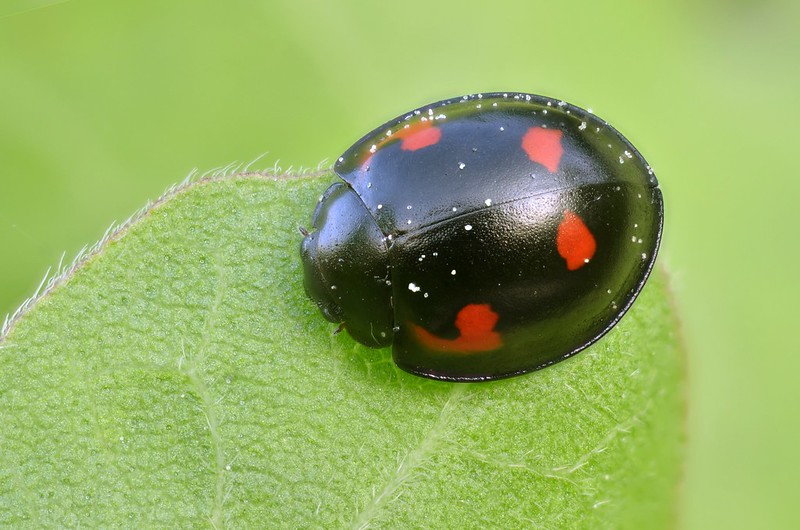
Pine Ladybird
The Pine Ladybird is black with four red spots. The two red spots at the front are distinctively comma-shaped. The pronotum (section between the head and wing cases) is black. This ladybird has a distinctive rim around the edge of the wing cases.
It is around three to 4.5 mm in length. Despite its name, this ladybird is found on a diverse range of trees. It feeds on woolly aphids and scale insects.
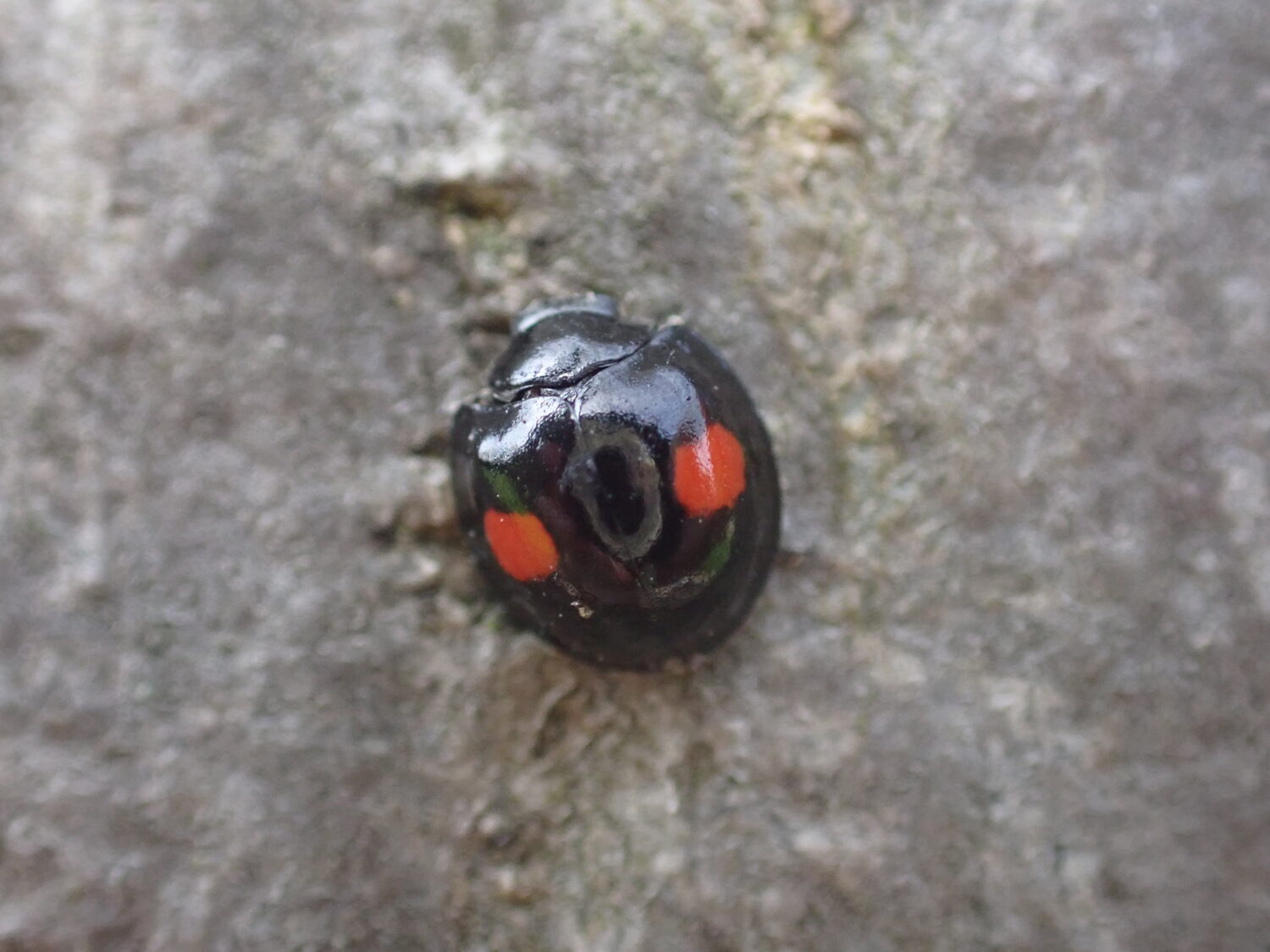
Kidney-spot Ladybird
The Kidney-spot Ladybird is black with two large and circular red spots. The pronotum and legs are black. This ladybird also has a distinctive rim around the edge of the wing cases.
The Kidney-spot is around four – five mm in length. It is commonly found in deciduous woodland, particularly on Ash and Sallow. This species feeds on scale insects.
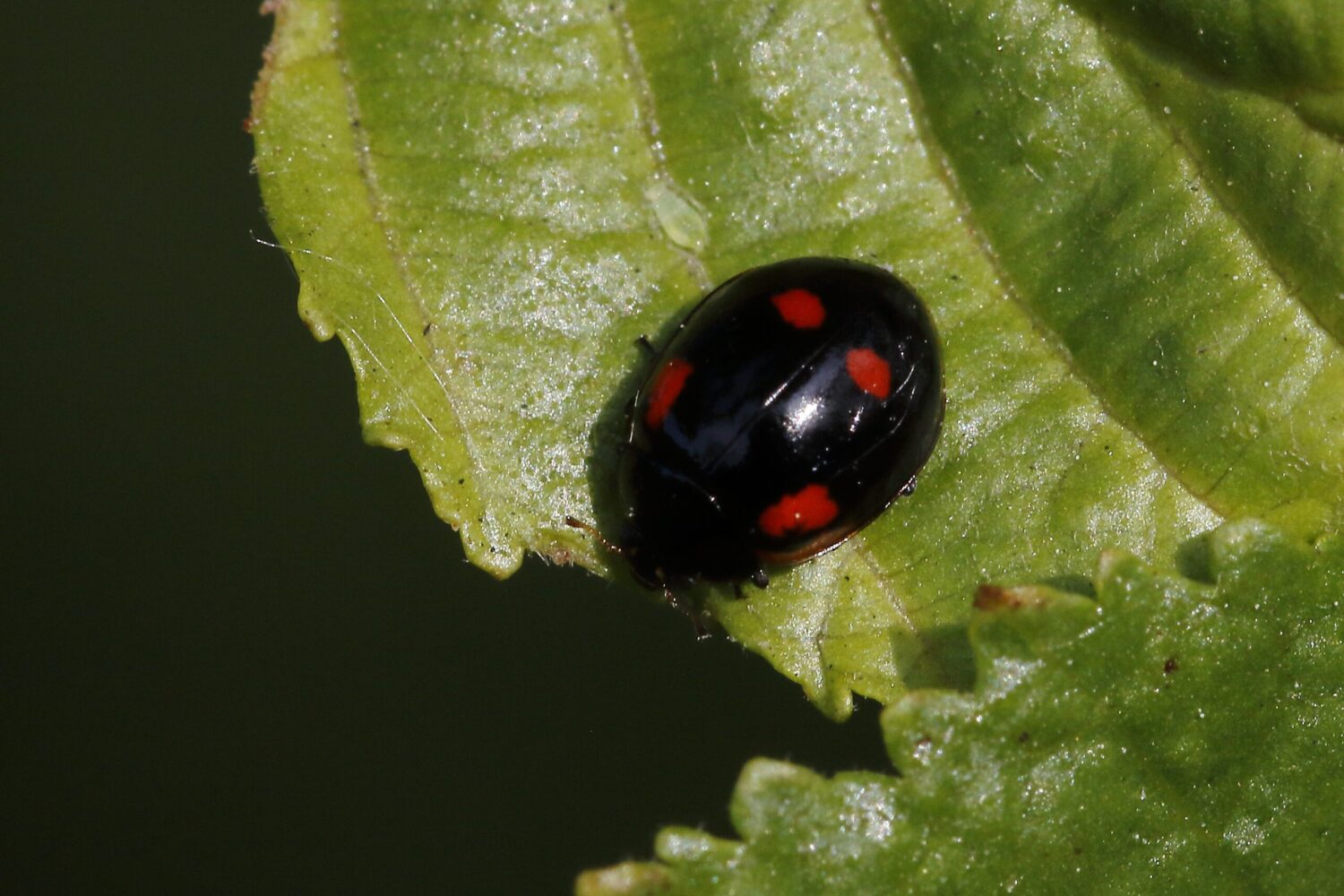
Two-spot Ladybird (Four-spot melanic form)
The Two-spot Ladybird is typically red with two black spots. However, it has two other common melanic forms.
The four-spot melanic form of this ladybird is black with four red spots. There are two elongated red spots at the front of the wing cases and two more circular central spots towards the rear.
The Two-spot Ladybird is around four to five mm in length. This species feeds on aphids.
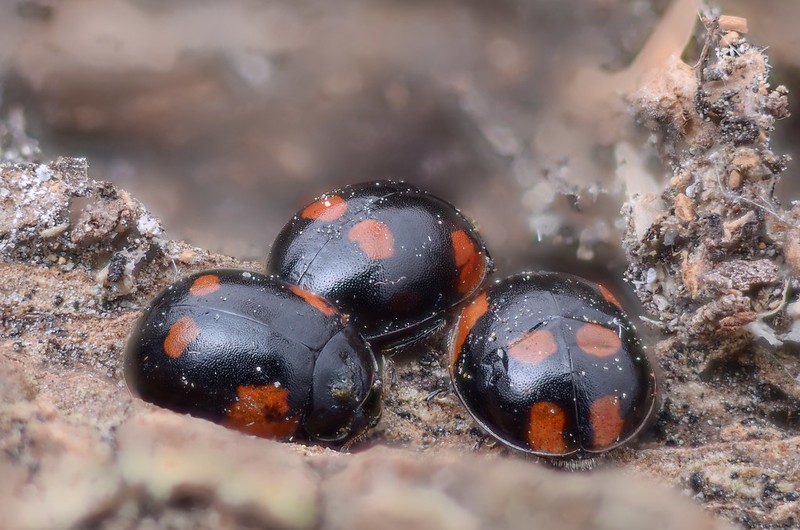
Two-spot Ladybird (Six-spot melanic form)
The six-spot melanic form is black with six red spots. It looks similar to the above four-spot melanic form, but has two red spots at the rear edge of the wing cases.
Two-spot Ladybirds can be found in a variety of habitats and many records are from urban areas. It is readily found on Lime and Sycamore trees.
The Two-spot Ladybird is around four to five mm in length.
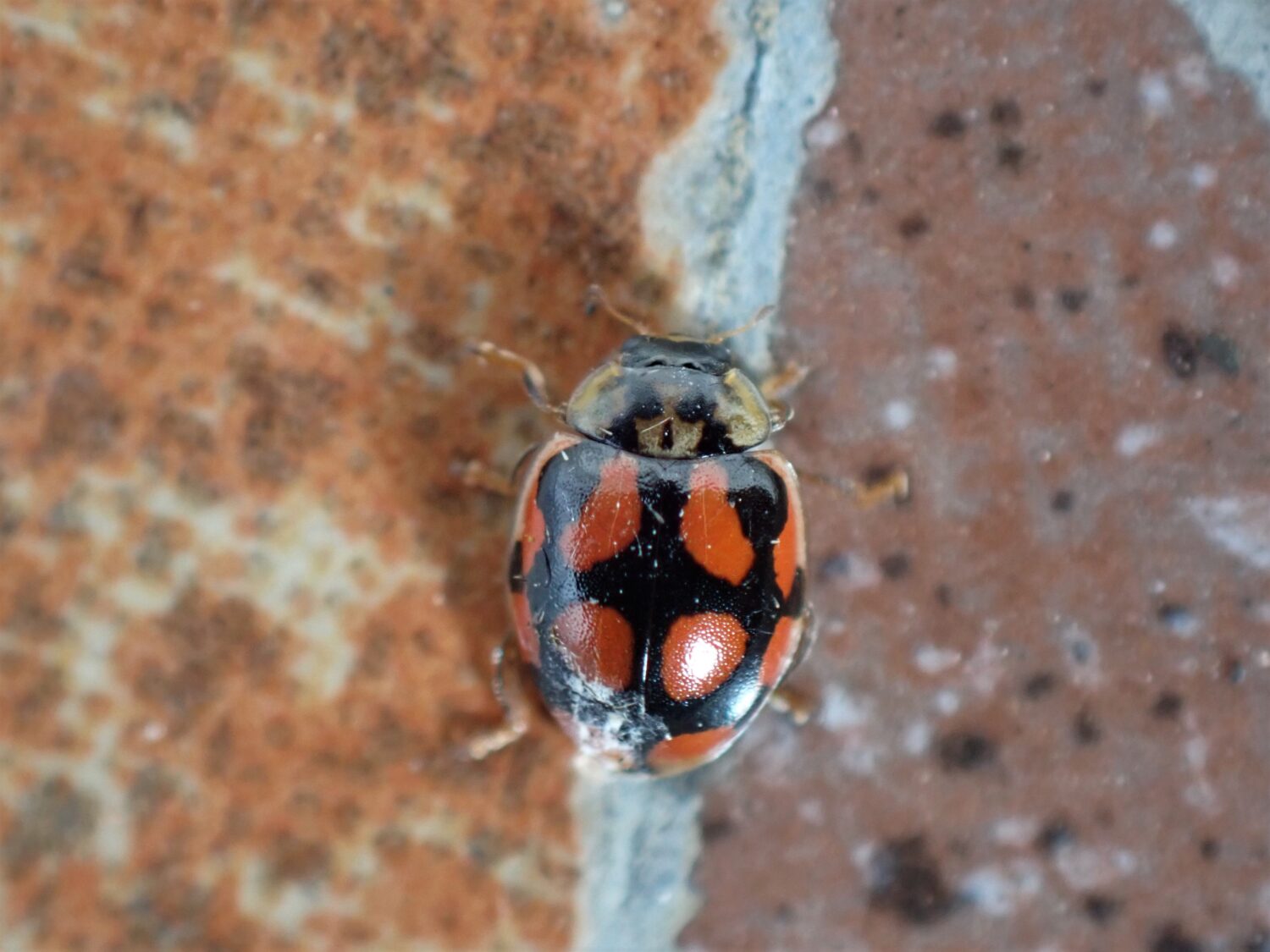
10-spot Ladybird (Chequered form)
The 10-spot Ladybirds is one of the most variable ladybirds in Britain.
The chequered form of this species can be black with grid-like red markings. These markings give a chequered appearance. The protonum is white with black markings.
This ladybird is generally found on deciduous trees and hedgerows. The 10-spot Ladybird is around 3.5 to 4.5 mm in length. It feeds on aphids.
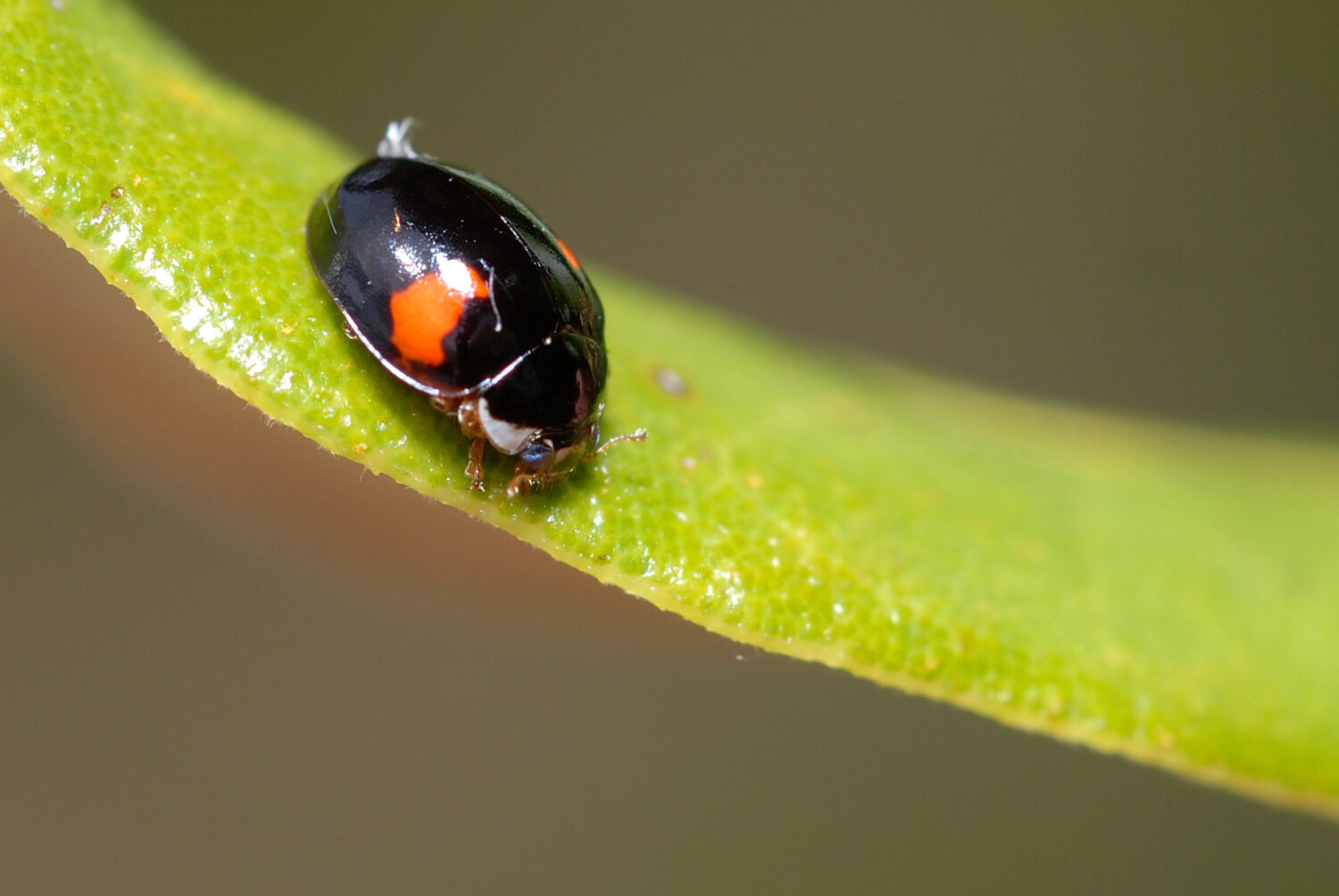
10-spot Ladybird (Melanic form)
The melanic form of the 10-spot Ladybird is black with two orange or red shoulder flashes on the wing cases. The protonum is black with white edging.
It has brown legs that helps you to separate it from melanic 2-spot Ladybirds.
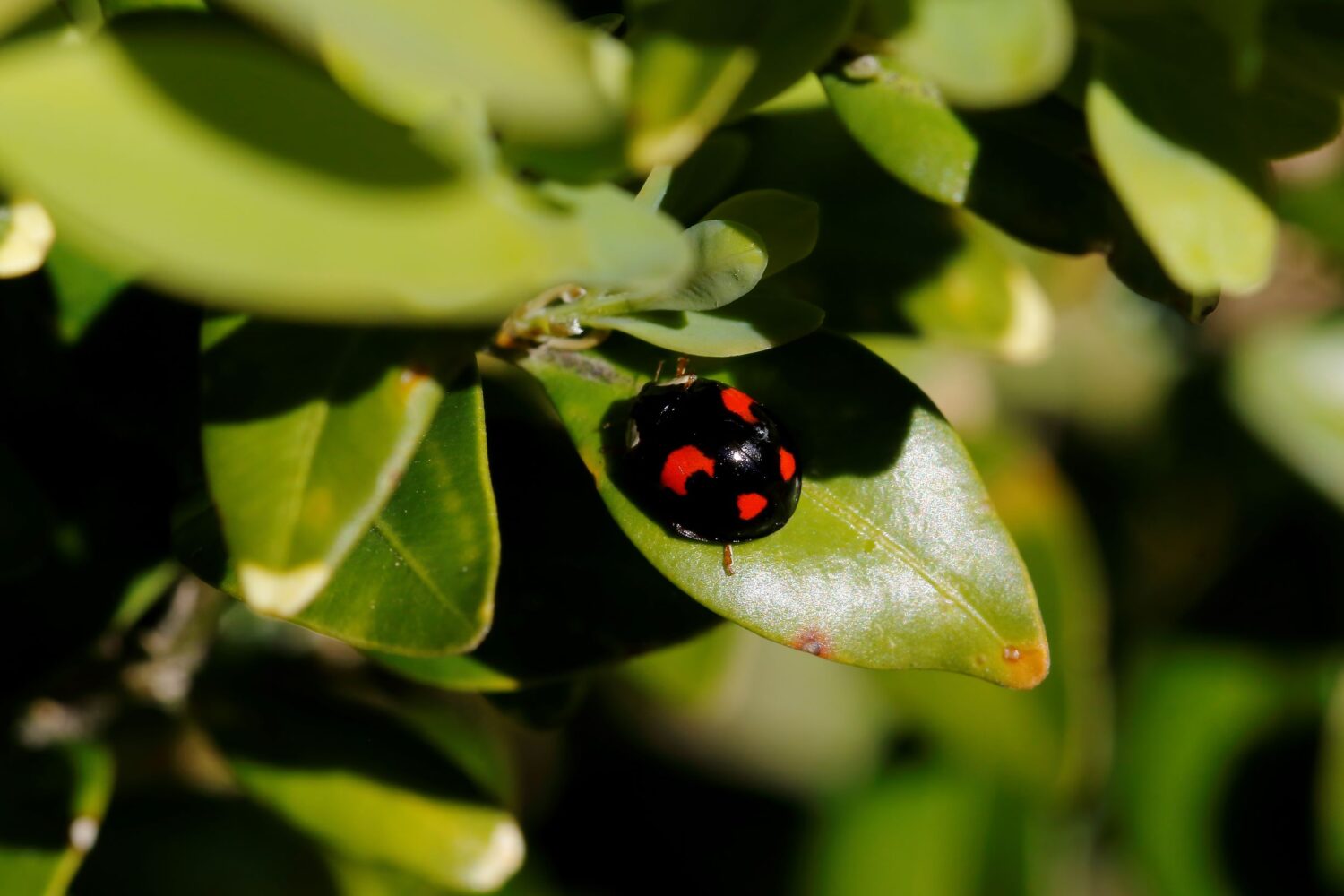
Harlequin Ladybird (form spectabilis)
The Harlequin Ladybird is also a highly variable ladybird. In general, it is a large ladybird at five to eight mm in length and has a domed appearance.
This form of the Harlequin can be black with four red markings. The front pair of red markings can be arch-shaped as shown on the left image. The pronotum is black and white, unlike the Pine Ladybird and melanic forms of 2-Spots.
The Harlequin feeds on aphids, insects, soft fruits, and pollen and nectar.
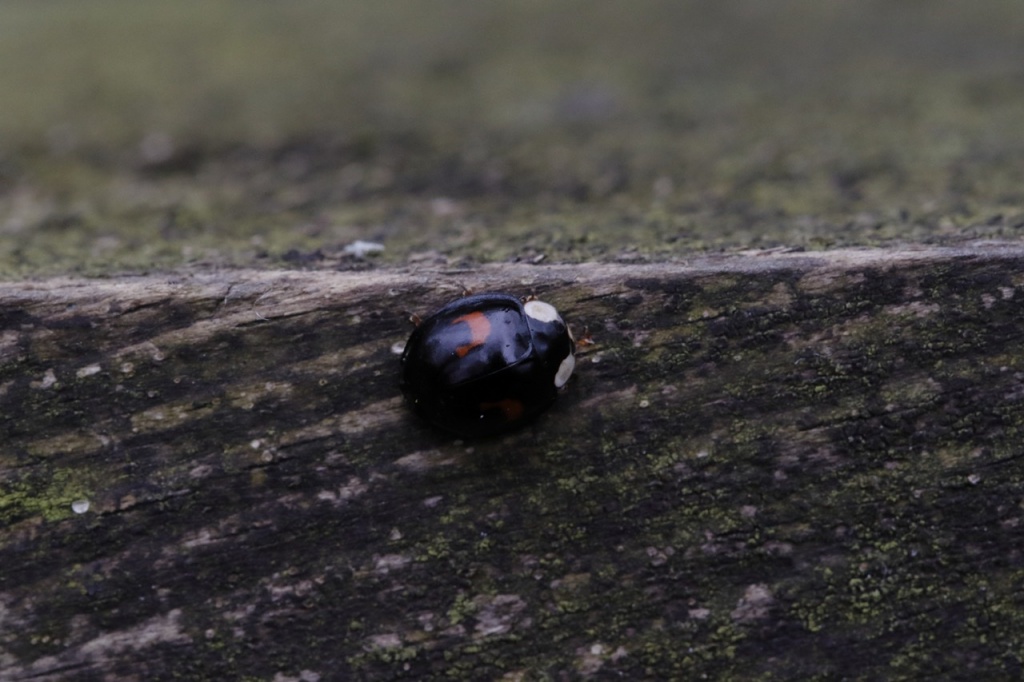
Harlequin Ladybird (form conspicua)
This form of the Harlequin Ladybird is very similar to the above spectabilis form. Instead of four red markings, this form generally has two red spots or patches. The two red markings can be arch-shaped as shown on the left. The pronotum is black and white, unlike the Pine Ladybird and melanic forms of 2-Spots.
Native to Asia, the Harlequin Ladybird was first recorded in the North East in 2010. It can be found in a variety of habitats. Many records are from urban areas where deciduous trees are abundant.
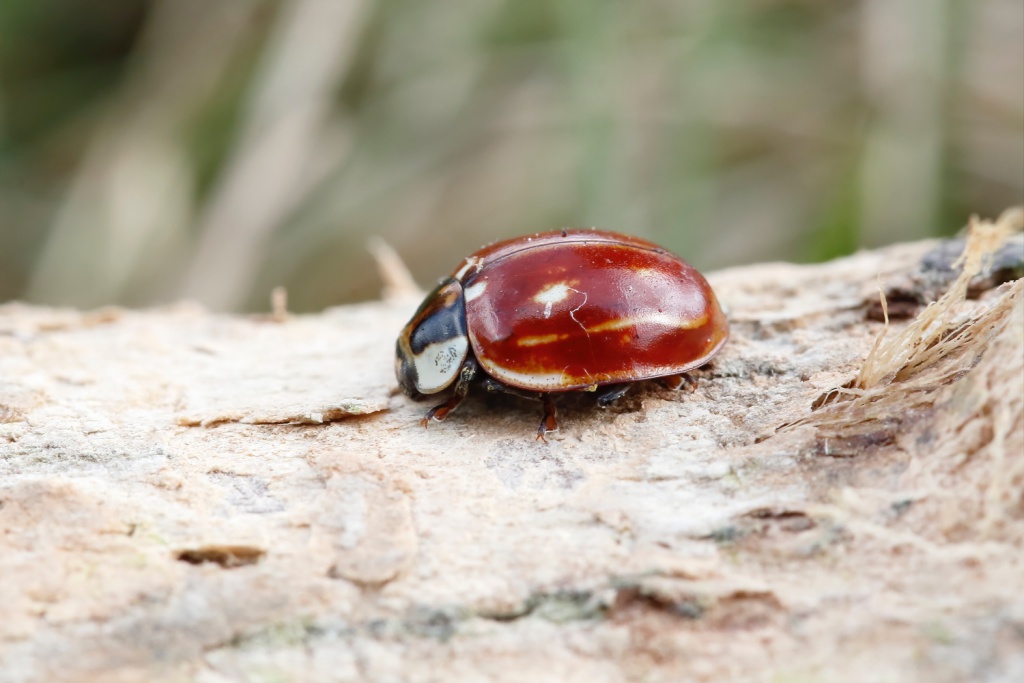
Join the North East Ladybird Spot
Urban or rural, beginner or expert, we need your help to record ladybirds across the North East.
Your sightings can add to our understanding of ladybirds in the region and inform conservation and monitoring efforts.
Taking part is easy and sighting of all ladybird species are welcome. Please join in today.